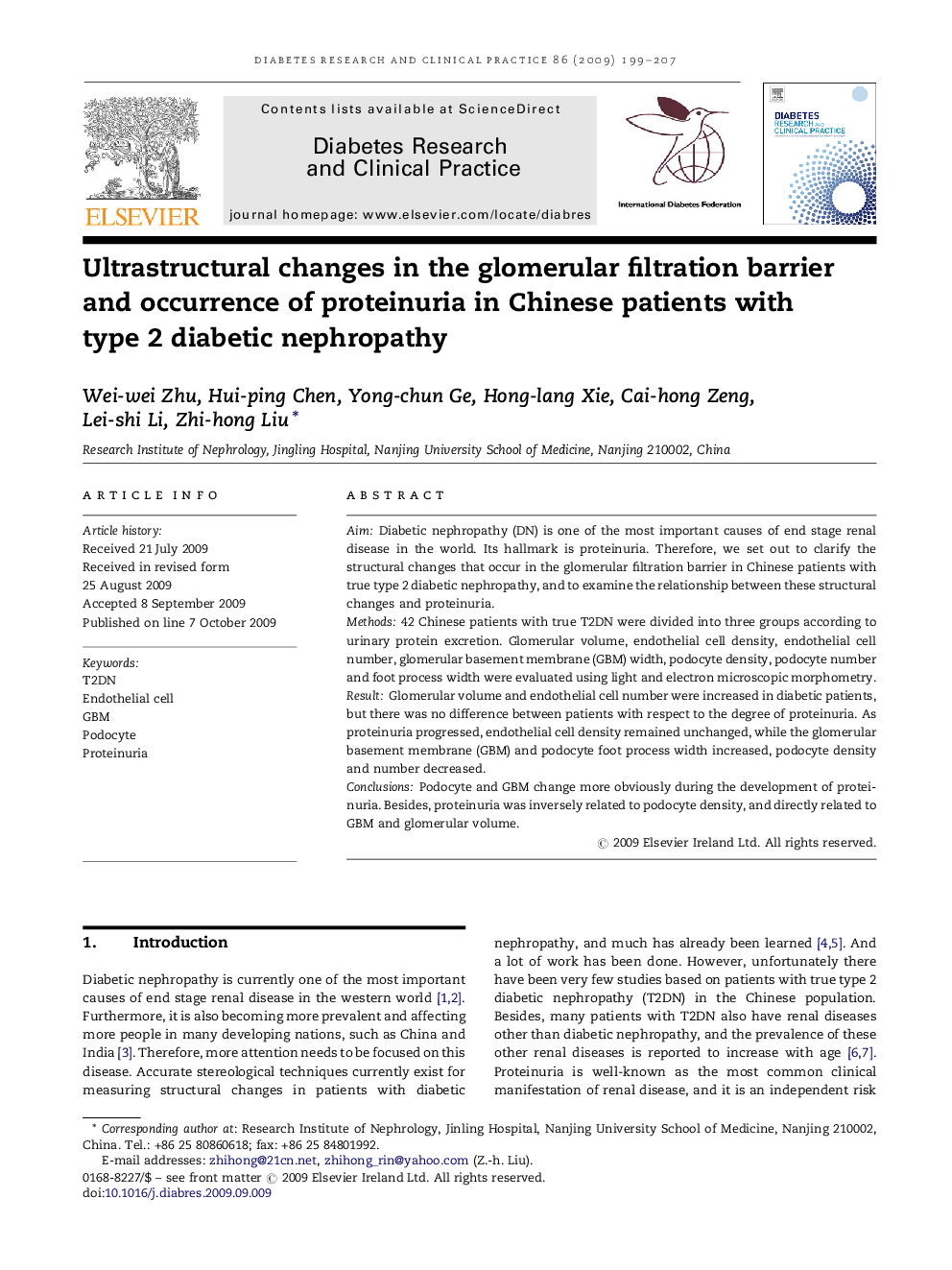| Article ID | Journal | Published Year | Pages | File Type |
|---|---|---|---|---|
| 2797721 | Diabetes Research and Clinical Practice | 2009 | 9 Pages |
AimDiabetic nephropathy (DN) is one of the most important causes of end stage renal disease in the world. Its hallmark is proteinuria. Therefore, we set out to clarify the structural changes that occur in the glomerular filtration barrier in Chinese patients with true type 2 diabetic nephropathy, and to examine the relationship between these structural changes and proteinuria.Methods42 Chinese patients with true T2DN were divided into three groups according to urinary protein excretion. Glomerular volume, endothelial cell density, endothelial cell number, glomerular basement membrane (GBM) width, podocyte density, podocyte number and foot process width were evaluated using light and electron microscopic morphometry.ResultGlomerular volume and endothelial cell number were increased in diabetic patients, but there was no difference between patients with respect to the degree of proteinuria. As proteinuria progressed, endothelial cell density remained unchanged, while the glomerular basement membrane (GBM) and podocyte foot process width increased, podocyte density and number decreased.ConclusionsPodocyte and GBM change more obviously during the development of proteinuria. Besides, proteinuria was inversely related to podocyte density, and directly related to GBM and glomerular volume.
